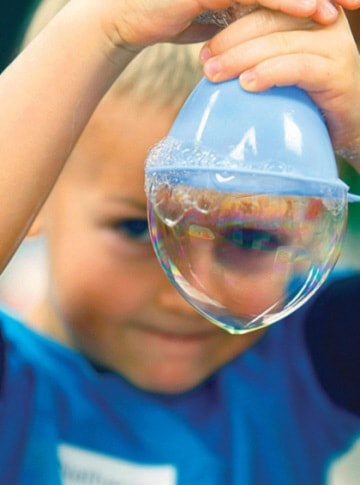Splish, splash they’re creating bubbles in the class.
The Science in Motion program visited Mecca Glen School recently and the kindergarten class had an educational blast learning about bubbles, hands-on style.
“We’ll take a look at how bubbles form,” said outreach coordinator Bernadette Blakey, with Science in Motion and the Telus World of Science in Edmonton.
From how bubbles make their shape to how to keep them from popping as fast, Blakey covered it all.
Grades kindergarten to 5 had a chance to learn with Science in Motion and four programs tailored for their curriculum.
Kindergarten learned with Bubble Bubble, Grade 1 got Colour Light, grades 2 and 3 learned Splish Splash; a lesson on water density and the water cycle; and grades 4 and 5 have a program called Complete the Circuit.
Science in Motion is a travelling science program for rural schools. “It’s an outreach program for schools that don’t have access or it’s harder for them to do fieldtrips into the big city,” said Blakey.
Blakey, who has a degree in science, believes the hands-on aspect the program provides is beneficial for students of all ages because it gets them excited and engaged.
Although most of the presentations Science is Motion offers are for kindergarten to Grade 9 students, they can be adapted for high school, said Blakey. “Even the big kids need hands-on stuff. They really enjoy it. It also gives the teachers access to an expert.”
Science in Motion offers 21 classroom presentations, six assemblies and four community presentations.
The assembly presentations are experiments designed on a larger scale to entertain and educate many classes at once.
“We do the big experiments, the blow stuff up, the fancy stuff,” said Blakey.
Science in Motion has been to Mecca Glen about three times in the last five to six years, and Blakey says they try to switch up the programs to avoid repetition.
“It also depends on what time of year we’re here.” Blakey and the other presenters try to align their presentations with what each grade is learning at the time.
Science in Motion presents 10 months out of the year and presents in all regions of the province.
